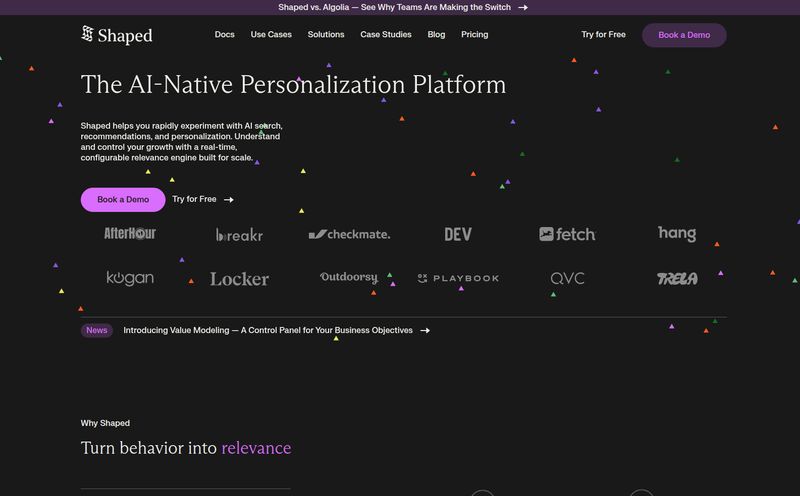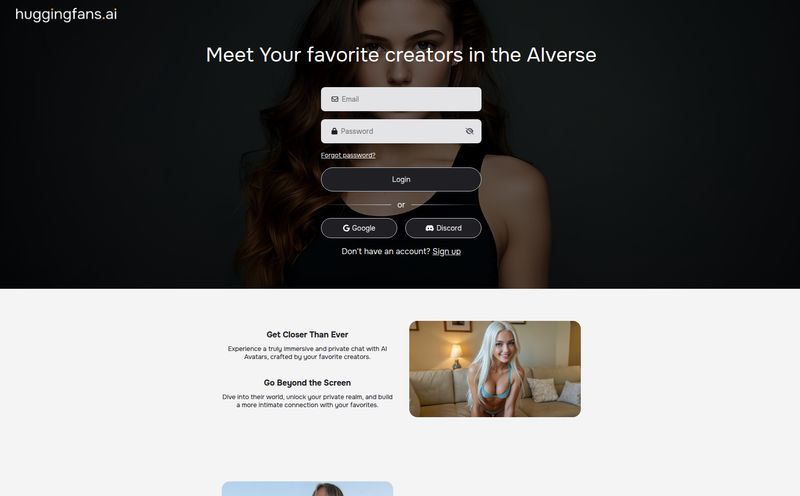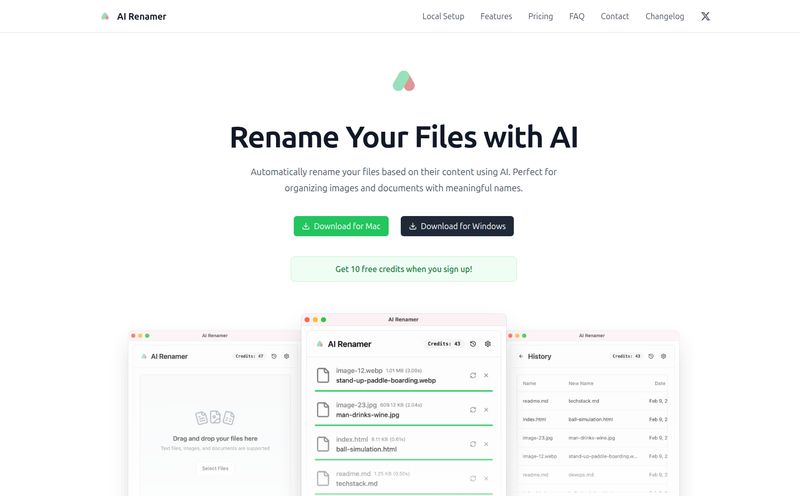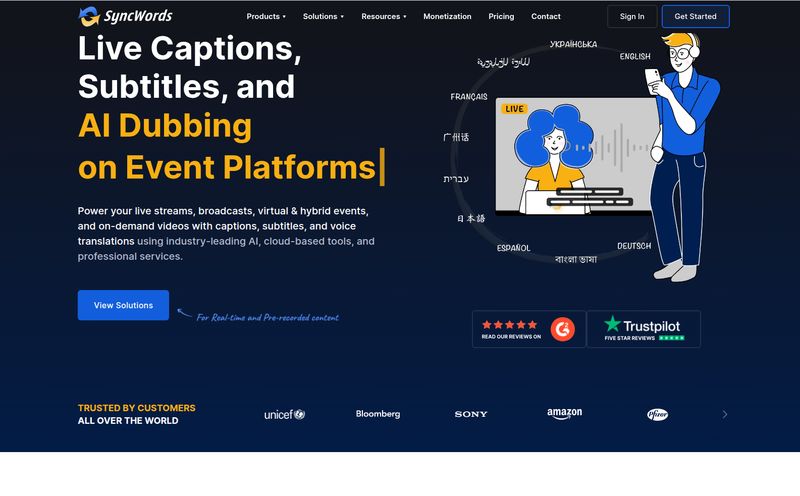Let’s have a chat. As someone who’s been neck-deep in the SEO and traffic game for years, I’ve seen countless tools that promise to revolutionize… well, everything. Most of them are just repackaged fluff. But every so often, you stumble upon something that makes you lean in a little closer. Something that feels less like a marketing gimmick and more like a genuinely useful piece of engineering.
I’ve been poking around api4ai lately, and I have to say, it’s got my attention. If you've ever been in a project meeting where someone says, “Wouldn't it be cool if our app could automatically tag user photos?” and you felt a cold sweat thinking about the dev hours, the cost, the machine learning specialists you'd need to poach... then you’ll want to read this. This might just be the toolkit you've been searching for.
So, What Exactly is api4ai?
In the simplest terms, api4ai is a library of pre-built AI brains that are exceptionally good at understanding images. Think of it like a Swiss Army knife for all your image processing needs. Instead of building a complex AI model from the ground up to, say, remove the background from a product photo, you just make a simple call to their API. It’s all cloud-native, which is just a fancy way of saying their servers do all the heavy lifting, not yours. You interact with it through straightforward HTTP RESTful calls, which any developer worth their salt will find refreshingly simple.
It’s less about reinventing the wheel and more about having a whole garage full of high-performance wheels ready to be bolted on to your project at a moment's notice. And in the world of fast-paced development, that speed is gold.

Visit api4ai
A Look Inside the Toolbox: The Standout Features
Okay, so it's a bunch of APIs. But what can it actually do? This is where it gets interesting. The platform isn't just a one-trick pony; it’s a full-on circus of capabilities.
The Essentials for E-commerce and Content Creators
Right off the bat, a few features scream “game-changer” for anyone selling stuff or managing content online. The Background Removal tool is probably the most obvious one. We’ve all seen those messy product shots on a cluttered desk. This tool cleans that up instantly, giving you a professional, transparent background ready for any marketplace. Then there’s Image Labelling and Tagging. Imagine uploading a photo of a beach, and having it automatically tagged with 'beach,' 'ocean,' 'sand,' 'sky,' 'vacation.' This is a massive win for SEO (hello, automated alt-text!) and for building searchable, organized media libraries.
Powerhouse Tools for Moderation and Safety
If you run any kind of platform that deals with user-generated content, you know the moderation nightmare. This is where api4ai’s NSFW Content Moderation comes in. It’s a digital bouncer that can automatically flag or block inappropriate images before they ever cause a problem. In a similar vein, they offer tools like Image Anonymization, which can blur faces or other identifiable information—incredibly important in our privacy-conscious world (looking at you, GDPR). I was also genuinely impressed to see PPE Monitoring. In a post-pandemic world, an API that can check if workers in an image are wearing their safety gear is not just clever, it's critcal for workplace safety compliance.
The “Wow, It Does That?” Features
This is the fun stuff. The tools that show the true depth here. We're talking Face Analysis (detecting age, gender, emotion), Object Detection, and even super-niche recogniton tools for things like wine bottles, furniture, and fashion items. It’s this level of specialty that separates a basic tool from a professional platform. It shows they aren't just chasing the low-hanging fruit; they're solving specific, real-world business problems.
The Good, The Bad, and The API Call
No tool is perfect, right? It’s always a balance. In my experience, it’s about weighing the wins against the trade-offs. So let’s get real about what works and what might give you pause.
"The sheer breadth of ready-to-use APIs is the main draw here. The time-to-market for a new feature can be slashed from months to days."
On the plus side, the biggest win is the speed and efficiency. Having this wide array of functions ready to go is a massive advantage. It’s cloud-based, so you don’t worry about scaling or server maintenance. And because it's all ready-made, you empower your developers to integrate some seriously sophisticated tech without needing a PhD in machine learning. It’s a huge democratizer of AI.
Now for the reality check. The biggest drawback is the one inherent to any cloud service: you're dependent on it. If your internet connection is flaky, or if api4ai has a service disruption, your feature goes down with it. That's the trade-off for not hosting it yourself. Then there's the cost. While they operate on a subscription model, high-volume usage will obviously have a price tag. It's not a free lunch, and you'll need to factor API call costs into your operational budget. Lastly, you’re using their service, so you have to play by their rules—their API terms of service are your new best friend.
What's the Damage? A Look at api4ai Pricing
Here’s where things get a little… mysterious. If you go looking for a pricing page on their site, you won't find a neat little table with Bronze, Silver, and Gold tiers. They're playing it a bit close to the chest.
Honestly? This isn't that unusual for a B2B platform that offers custom solutions. It usually means pricing is highly dependent on your specific use case—the volume of API calls you’ll be making, which specific APIs you need, and whether you require a custom solution. The pricing is likely a subscription model, as they state, but you’ll have to reach out to them directly for a quote. While I always prefer transparent pricing, this approach does mean you'll probably get a plan that’s better suited to your actual needs rather than a one-size-fits-all package.
Putting It All Together with a Simple Example
The image on their site shows a Python code snippet, and it really highlights the simplicity. You're basically just using a standard library (`requests`) to send an HTTP POST request to their endpoint. You provide your API key and the URL of the image you want to process. That's it. What you get back is a clean, structured JSON response with the data you need.
For a developer, this is music to their ears. No clunky SDKs to install, no complicated authentication hoops to jump through. Just a simple, predictable, and RESTful interaction. It’s elegant, and it’s a testament to a developer-first mindset.
My Final Take: Is api4ai Worth a Shot?
So, what’s the verdict? I'm genuinely optimistic about this one. For startups, developers, and even established companies looking to quickly inject some powerful image intelligence into their applications, api4ai looks like a very, very solid contender. It's a powerful accelerator.
It expertly handles the heavy, complicated AI lifting so you and your team can focus on what you do best: building a great product for your users. The trade-offs are standard for any SaaS API, but the potential upside in saved time, money, and development headaches is immense. If you have an image-related problem to solve, I’d say giving api4ai a serious look isn’t just a good idea—it might be the smartest shortcut you take all year.
Frequently Asked Questions
What is api4ai in simple terms?
It's a collection of cloud-based AI tools that you can easily integrate into your own apps to perform complex image processing tasks like background removal, object detection, and content moderation, all through a simple API call.
Do I need to be an AI expert to use it?
Absolutely not! That's the whole point. It's designed for developers of all skill levels to use. If you can make an HTTP request, you can use api4ai. It handles all the complex AI modeling for you.
Is api4ai a free tool?
It operates on a subscription-based model. While there might be a free tier for low-volume testing (you'd have to check with them), significant usage will require a paid subscription. Pricing is tailored to usage, so you'll need to contact them for a specific quote.
Can I get a custom AI model for my business?
Yes. The platform explicitly mentions that they offer custom solutions. If you have a unique image processing need that isn't covered by their off-the-shelf APIs, they can likely build a custom model for you.
How good is the Background Removal tool?
Based on industry standards for such tools, it's designed to be highly effective for e-commerce product shots, portraits, and other images where a clean, isolated subject is needed. It’s one of the most popular features for businesses looking to standardize their product imagery.
What kind of support can I expect?
While specifics aren't listed, any B2B platform offering custom solutions typically provides dedicated support for its clients, especially at the enterprise level. For general users, there is likely documentation and community support available.
Reference and Sources
- What Are Cloud-Native Applications? - An excellent overview from Red Hat on the architecture behind platforms like api4ai.
- Understanding And Using REST APIs - A great read from Smashing Magazine for anyone wanting to better grasp the technology that makes api4ai tick.



